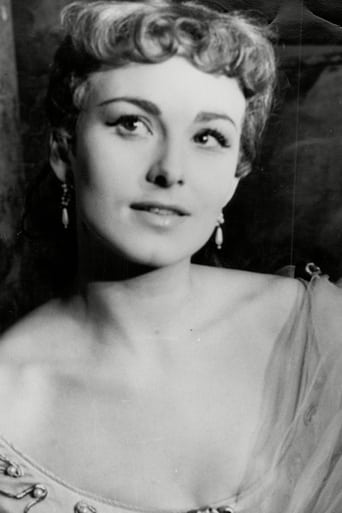Unlimitedia
Sick Product of a Sick System
BoardChiri
Bad Acting and worse Bad Screenplay
Salubfoto
It's an amazing and heartbreaking story.
Cheryl
A clunky actioner with a handful of cool moments.
Marcin Kukuczka
Although Charles Sturridge's movie is based on the classical novel by E.M. Forster, one does not have to be knowledgeable about the literature of the period in order to like the film. The source novel seems to be marginalized in many reviews and, consequently, I do not intend to discuss the content of the movie and its faithfulness to the novel. What has caught my attention in Sturridge's movie, in particular, are the cast and the locations. Those seem to be the right spots where people fall in love with, where I fell in love with... the movie.The cast are worth appreciation. Helen Mirren, who has gained great success and popularity thanks to many significant roles, also here supplies us with a particularly insightful portrayal as Lilia. Lilia is an Englishwoman who appears to be absolutely torn apart and, therefore, quite unhappy with her family and disappointed with her misalliance marriage with Gino Carella (Guido Guinelli). Nevertheless, she does not give up the struggle to live her own, short but genuine life... Another very interesting performance is offered by Helena Bonham Carter who, in 1991 when the role was given to her, was already acquainted with the genre after Ivory's ROOM WITH A VIEW. Here, she fits well as Caroline, a seemingly indifferent observer who opens herself masterfully in the end. Among the female roles, I would also make a note about Judy Davis (Harriet) who crafts well the depiction of coldness and reluctance to the foreign culture.As for the male roles, Rupert Graves as Phillip, a cold English gentleman, and Guido Guinelli as Gino, a spontaneous Italian 'macho', are outstanding. In their characters, or more to say, in the contrasts between their natures, culture clash is convincingly depicted. Phillip is extremely cold and phlegmatic. He feels confused about any spontaneous behavior and rather thinks over the plans than takes quick steps. Gino, though extremely choleric and furious, is authentic, genuine and straightforward. He teaches others not to be ashamed of feelings. Although Phillip feels uncomfortable with this Italian authenticity at first, these features appear to take over in his life too. Consider certain points of the film where the two are particularly memorable, just to mention the opera scene, the evening at the cistern, or Gino's witty games with his sweet baby, the unfortunate victim of jealousy.The locations of the film together with artistic features galore are worth high praise, too. Tuscany...that says for itself... Who hasn't seen many great films made in this pearl of Italy. Just to name a few: Audrey Wells' UNDER THE TUSCAN SUN, Bernardo Bertolucci's STEALING BEAUTY and Roberto Benigni's LIFE IS BEAUTIFUL. Tuscany is the certain aspect for any moving picture to be a breathtaking piece of art. In WHERE ANGELS FEAR TO TREAD, the views of medieval Siena and San Gimignano with the fabulous music by Rachel Portman make you fall in love with Italy in the similar manner as it happens with the characters. I particularly liked the moment of Lilia walking at the towers of San Gimignano. A place to fall in love with!Summing it up, the artistic features make the film unique. As for the source novel, saying it is accurate would be nothing but a conjecture. I am not going to evaluate the movie in certain terms. All I want to say is: WHERE ANGELS FEAR TO TREAD is no masterpiece but a nice movie where you will find something for yourself. The delightful scenes, lovely Tuscan views, great performances to admire with a glass of Chianti in your hand. Only those who hardly know the pleasures of wine will reject it. Enjoy!
Framescourer
'Fools rush in where angels fear to tread' said Alexander Pope, which helpfully explains the subject of the title. The fools are an absurd English party looking to 'rescue' a baby from its Italian father (the party bound to its mother by the tenuous association of inheritance and acquaintance).'Foolishness' also becomes a euphemism for repression in this disarmingly light period drama, a repression buried almost beyond scrutiny by the impressive Rupert Graves. His is the key, poignant role although his character is matched in script and execution by Helena Bonham Carter's slow-burning Caroline Abbott and the outstandingly dysfunctional Judy Davis. Helen Mirren is miscast, but luckily is little more than a trope - Giovanni Guidelli is also alien to this company but actually that's rather more to the point.The film is described in a number of reviews as being 'sumputously filmed', or the like. This is not the case: it's rather simply filmed but in taking in the beautiful Tuscan town of San Gimignano both at a distance and close up cannot fail to seduce the characters and viewer alike. It also has one of the most succinct yet comprehensive sequences about the true nature of opera in a movie. 7/10
Martin Bradley
Charles Sturridge's large-screen version of E M Forster's tragicomic masterpiece of class and culture clash is as buttoned up as the corsets and starched shirts it's characters wear. The movie is wrong-footed and scenes don't build to anything. Everything is held in reserve until the whole film seems on the verge of disappearing, (which it finally does, unsatisfactorily, racing through the final scenes). While Helena Bonham Carter and Rupert Graves just about get their characters, (you want to slap them, and hard, but at least you feel as if they are real), and Helen Mirren is full of life, (until she dies in childbirth), Judy Davis' performance as mad aunt Harriet takes her usual screaming harpy to unrestrained heights even for her, while Giovanni Guidelli's bland, handsome romantic hero is hopelessly inadequate. This is the team that made "Brideshead Revisited" for television; perhaps if they had six hours of TV time they might just have pulled this off as a decent series. Nevertheless, I can't help feeling that as it stands Merchant/Ivory could have made the masterpiece that Forster's book so obviously is.
Tanechka
Charles Sturridge's adaption of E.M. Forster's classic novel is well in line with such other greats as "Howards End", "A Room With a View", and "A Passage To India". As with all of Forster's work, "Where Angels Fear to Tread" treats the topic of Edwardian British society with poignancy and humour.Cultures clash when Philip Herriton is forced by his mother to retrieve the only child of his dead sister-in-law, Lilia, from its Italian father. The baby represents both the English and Italian way of life, and the ensuing struggle over it is an analysis of just how futile our own nativist prejudices can be.Such a sensitive topic is dealt with by a charming cast. Rupert Graves is perfect as a man transformed by his horrific experiences; Helen Mirren is both laughable and lamentable as the tragically flighty Lilia; Helena Bonham-Carter is the soul of goodness, and Judy Davis (a Forster veteran from "A Passage to India") provides comic relief as stuffy Harriet. These fine performances are matched with a beautiful score by Rachel Portman and even more beautiful Italian vistas courtesy of Mr. Sturridge.Stimulating and provocative, I highly recommend this film to those interested in either Forsters' work or the imperialistic inclinations of the British circa 1900.





